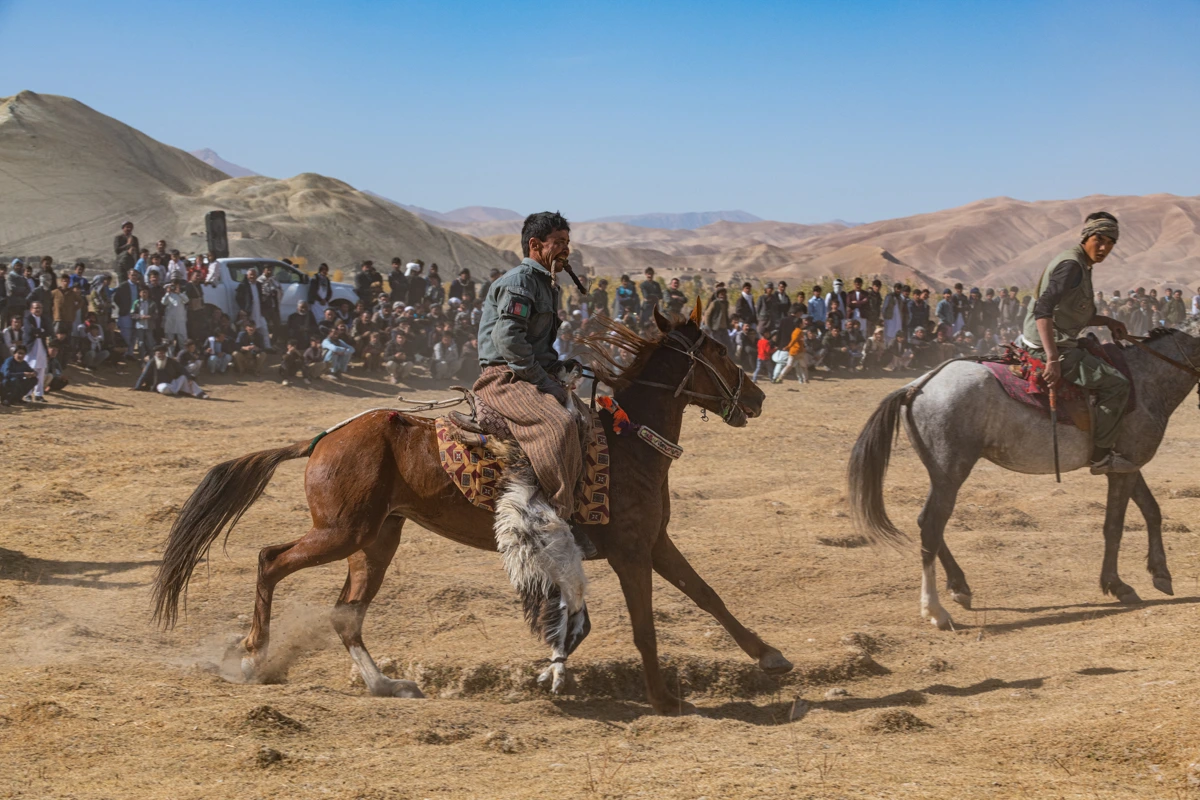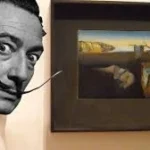
Buzkashi, the exhilarating and culturally rich sport of horse-mounted goat-grabbing, has captivated audiences and participants alike for centuries. Originating in Central Asia, particularly in Afghanistan, this unique game is not just a test of strength and skill; it is a vibrant celebration of tradition, community, and heritage. As you delve into the world of Buzkashi, you’ll discover its fascinating rules, historical significance, and the colorful festivities that accompany this thrilling competition. In this blog, we present 25 interesting facts about Buzkashi that will take you on a journey through its cultural landscape, revealing the stories and customs that make this sport a cherished part of Central Asian identity. Whether you’re a curious newcomer or a seasoned enthusiast, there’s something here to pique your interest and deepen your appreciation for this remarkable tradition.
Buzkashi is a traditional Central Asian sport, particularly popular in Afghanistan.
Buzkashi is not just a game; it represents a significant part of the cultural heritage of Central Asia, particularly Afghanistan. The sport has deep historical roots and is often associated with the nomadic tribes of the region. It serves as a social event where communities come together to celebrate their heritage, showcasing not only the skills of the riders but also the rich traditions and values of Afghan society.
The name “Buzkashi” translates to “goat pulling” in Persian.
The term “Buzkashi” derives from Persian, where “buz” means goat and “kashi” means pulling or dragging. This name aptly describes the central activity of the sport, where players compete to seize a goat carcass and carry it to a scoring area. The name reflects the historical significance of goats in pastoral societies, where they represent sustenance and livelihood, further embedding the sport within the cultural context of the region.
The game is played on horseback, where players compete to grab a headless goat carcass.
In Buzkashi, riders on horseback engage in a fierce competition to grab a headless goat carcass, which can weigh up to 30 kilograms (approximately 66 pounds). The players must demonstrate exceptional equestrian skills, agility, and strength as they maneuver their horses through a chaotic environment filled with other riders. The game is not just about physical prowess; it also requires strategic thinking to outmaneuver opponents and secure the carcass.
Buzkashi has roots that date back over a thousand years.
The origins of Buzkashi can be traced back over a millennium, with some historical accounts suggesting it dates back to the time of Genghis Khan. The sport has evolved over the centuries, influenced by various cultures and traditions across Central Asia. Its long-standing history reflects the enduring spirit of the communities that have embraced it, making it a vital part of their identity and cultural narrative.
The sport is often played during festivals and special occasions.
Buzkashi is more than just a sport; it is a celebration that often takes place during significant cultural festivals, weddings, and national holidays. These events draw large crowds, creating a festive atmosphere filled with music, food, and camaraderie. The matches serve as a platform for social interaction and community bonding, reinforcing the sport’s role in fostering relationships and cultural exchange among different groups.
There are two main styles of Buzkashi: “Kiz Buzkashi” (a form involving a female rider) and “Gul Buzkashi” (traditional male competition).
Buzkashi is distinguished by its two primary forms: Kiz Buzkashi, which features female riders, and Gul Buzkashi, the traditional male competition. Kiz Buzkashi is particularly noteworthy as it challenges gender norms within Afghan society, allowing women to participate and showcase their skills. Both forms highlight the inclusivity of the sport, demonstrating that Buzkashi can transcend traditional boundaries and promote equality in a culturally rich context.
The game can involve teams or individual players, with the objective of scoring points by placing the goat carcass in a designated area.
In Buzkashi, players can compete individually or as part of teams, depending on the rules set for the match. The primary objective is to score points by successfully placing the goat carcass in a designated scoring area, often marked by a circle or a goalpost. The competitive nature of the game, combined with the chaotic environment of multiple riders vying for the same prize, makes every match unpredictable and thrilling for both players and spectators.
Matches can last several hours, and there are no strict time limits.
Unlike many sports that operate under strict time constraints, Buzkashi matches can extend for several hours, sometimes even an entire day, depending on the players’ stamina and the intensity of the competition. The absence of a time limit adds to the excitement and unpredictability of the game, as players may engage in prolonged struggles to gain control of the carcass. This endurance aspect makes Buzkashi not only a test of skill but also of physical and mental resilience.
Buzkashi is known for its intense physicality and requires skilled horsemanship.
Buzkashi demands a high level of physical fitness and exceptional horsemanship from its players. Riders must be able to control their horses with precision while navigating through a throng of competing players. The sport involves rapid movements, sudden stops, and intense maneuvers, requiring riders to have a deep understanding of their horses’ behavior and capabilities. The physicality of Buzkashi is palpable, as players often engage in aggressive tactics to wrestle the carcass from opponents or to maintain control of their horses during the chaos of the match. This combination of skill, strength, and strategy makes Buzkashi a captivating spectacle for both participants and spectators alike.
Players often wear traditional clothing, including a “chapan” (a long coat) and a “pakol” (a type of hat).
The attire worn by Buzkashi players is not only functional but also deeply rooted in Afghan culture. Riders typically don a “chapan,” which is a long, often colorful coat that provides warmth and allows for ease of movement. The “pakol,” a soft, round-topped hat, is commonly worn by men and symbolizes Afghan identity. This traditional clothing reflects the rich cultural heritage of the region and adds a vibrant visual element to the matches, enhancing the overall experience for spectators. The clothing also serves practical purposes, protecting the riders from the elements while allowing them to maintain their cultural identity during the competition.
The sport is considered a symbol of Afghan culture and national pride.
Buzkashi holds a prominent place in Afghan culture, serving as a powerful symbol of national pride and identity. The sport embodies the spirit of resilience and camaraderie among Afghans, particularly in times of conflict and adversity. It is often seen as a representation of the rugged, independent nature of the Afghan people, making it a source of unity and a celebration of their rich heritage. The passion for Buzkashi transcends regional differences, bringing together diverse communities in a shared appreciation of their cultural traditions.
Buzkashi has been depicted in various forms of art and literature throughout history.
The significance of Buzkashi extends beyond the playing field, as it has been a recurring theme in Afghan art and literature for centuries. Poets and writers have celebrated the sport in their works, highlighting its cultural importance and the values it represents. Traditional paintings and illustrations often depict scenes of Buzkashi, showcasing the excitement and drama of the matches. This artistic representation reinforces the sport’s role in Afghan identity and serves as a historical record of its evolution over time.
The game is played in various regions, including Afghanistan, Tajikistan, and Kyrgyzstan.
While Buzkashi is most closely associated with Afghanistan, it is also played in other Central Asian countries, including Tajikistan and Kyrgyzstan. Each region has its own variations and rules, reflecting local customs and traditions. In Tajikistan, for example, the game is known as “Gul Buzkashi,” and it often features different scoring methods and styles of play. This regional diversity highlights the widespread appeal of Buzkashi as a cultural phenomenon across Central Asia, fostering a sense of shared heritage among neighboring countries.
In some areas, the goat carcass can be replaced with a calf or other animal.
While the traditional version of Buzkashi involves a headless goat, some regions have adapted the sport by using a calf or other animals as the carcass. This variation can depend on local customs, availability of animals, and specific cultural practices. The use of different animals does not diminish the intensity of the game; rather, it adds an additional layer of challenge and excitement. The flexibility in the choice of carcass reflects the adaptability of Buzkashi and its ability to resonate with diverse communities.
Buzkashi matches can attract large crowds, with spectators cheering for their favorite teams or players.
Buzkashi is a communal event that draws significant crowds, often filling fields with enthusiastic spectators. Fans gather to watch the matches, cheering and supporting their favorite players or teams. The atmosphere is electric, with people celebrating their cultural heritage and enjoying the spectacle of the competition. These gatherings foster a strong sense of community, as families and friends come together to witness the excitement of Buzkashi, reinforcing social bonds and shared traditions.
The sport has been referred to as the “national sport of Afghanistan.”
Buzkashi is frequently recognized as the national sport of Afghanistan, symbolizing the country’s rich cultural history and traditions. This designation reflects the deep-rooted significance of the sport within Afghan society, where it is celebrated as a source of pride and identity. The title of national sport also underscores the importance of Buzkashi in promoting unity among diverse ethnic groups in Afghanistan, as it transcends regional boundaries and fosters a sense of belonging among all Afghans.
Buzkashi players often come from nomadic or pastoralist backgrounds.
Many Buzkashi players hail from nomadic or pastoralist communities, where horsemanship is a vital skill for daily life. These backgrounds contribute to the players’ exceptional riding abilities and familiarity with horses, which are central to the sport. The connection to nomadic traditions also emphasizes the importance of Buzkashi as a cultural expression of the lifestyles and values of these communities. As such, the sport serves as a bridge between traditional ways of life and contemporary cultural practices.
The game requires not only physical strength but also strategic thinking and teamwork.
Buzkashi is a multifaceted sport that demands a combination of physical strength, strategic thinking, and teamwork. Players must constantly assess the dynamics of the game, making quick decisions about when to engage opponents or when to retreat. Successful teams often employ tactics that involve collaboration and coordination among players to outmaneuver rivals. This blend of physicality and strategy makes Buzkashi a compelling spectacle, showcasing not only individual prowess but also the importance of working together to achieve victory.
Rules Variation: The rules of Buzkashi can vary significantly by region and local customs. In Afghanistan, the game is traditionally played with two teams of horsemen who compete to grab a goat carcass and bring it to a designated goal. However, in different regions, the size of the teams, the field dimensions, and specific gameplay rules can change. For example, in some areas, the match may be played with a modified carcass or have specific time limits, while in others, the focus may be on the skill of the riders rather than the outcome of the match. This regional diversity reflects the local culture and traditions, making each game unique.
Gambling Association: Buzkashi is sometimes associated with gambling, with bets placed on the outcomes of matches. Spectators often wager on their favorite teams or riders, adding an element of excitement and risk to the event. This practice can elevate the stakes and draw larger crowds, as the thrill of betting intertwines with the sporting event. However, the extent of gambling can vary widely, with some matches being purely for entertainment while others may involve significant sums of money, reflecting the deep cultural ties and social dynamics surrounding the sport.
UNESCO Recognition: The sport has been recognized by UNESCO as an important cultural heritage. This designation highlights Buzkashi’s significance as a traditional practice that embodies the history, values, and identities of the communities involved. The recognition aims to promote and preserve the cultural practices surrounding Buzkashi, ensuring that future generations understand its historical importance. This acknowledgment also helps to raise awareness about the sport on a global scale, encouraging cultural exchange and appreciation.
Traditional Music and Festivities: Buzkashi is often accompanied by traditional music and festivities. The atmosphere during matches is vibrant, with musicians playing traditional instruments to enhance the excitement. Spectators gather not only to watch the game but also to participate in the celebrations, which may include food stalls, dances, and other cultural performances. This festive environment transforms Buzkashi into a community event, where social bonds are strengthened, and cultural pride is showcased.
Evolution of the Sport: The sport has evolved over time, with modern variations and tournaments being organized. While traditional Buzkashi remains popular, contemporary adaptations have emerged, including organized leagues and international competitions. These modern tournaments often feature standardized rules and regulations, making the sport more accessible to wider audiences. The evolution reflects changing societal values and the desire to promote Buzkashi beyond its traditional roots, providing new opportunities for participants and fans alike.
Persian New Year Celebrations: In Afghanistan, Buzkashi is often played during the Persian New Year (Nowruz) celebrations. This timing is significant, as Nowruz marks the arrival of spring and is a time for renewal and festivity. Buzkashi matches during this period attract large crowds, as they are seen as a way to celebrate cultural heritage and community spirit. The connection between the sport and the holiday enhances its importance, making it a highlight of the festivities.
Cultural Inspirations: The sport has inspired similar games in other cultures, such as “Kokpar” in Kazakhstan and “Osh” in Kyrgyzstan. These variations share similarities with Buzkashi, such as the use of a carcass and horseback riding, but each has its unique rules and cultural significance. The existence of these related games illustrates the broader influence of Buzkashi across Central Asia, showcasing how traditional sports can transcend borders and adapt to different cultural contexts while maintaining their core elements.
FAQs about Buzkashi
Buzkashi is a Central Asian sport, often described as a rough and chaotic version of polo, played on horseback with a goat carcass instead of a ball. It’s a deeply ingrained cultural tradition, particularly in Afghanistan, and generates a lot of interest and questions. Here are some frequently asked questions about Buzkashi:
1. What is Buzkashi?
Buzkashi is a traditional Central Asian sport played on horseback. Two teams of chapandaz (skilled riders) compete to grab a goat or calf carcass (known as a boz) and carry it across a designated field to a scoring circle or area. It’s a physically demanding and often dangerous sport, requiring exceptional horsemanship and bravery.
2. Where is Buzkashi played?
Buzkashi is most famously played in Afghanistan, where it’s considered the national sport. It’s also played in other Central Asian countries like Kazakhstan, Kyrgyzstan, Tajikistan, Turkmenistan, and Uzbekistan, though often with variations in rules and traditions.
3. What is the “boz” made of?
The boz is traditionally a goat or calf carcass. It’s prepared specifically for the game. The animal is slaughtered, its entrails are removed, and the carcass is often filled with sand or weighted down to make it heavier and more durable. Sometimes the head and legs are removed. The boz is then cured for several days, making it tough and difficult to grab.
4. What are the rules of Buzkashi?
While the basic premise is simple – grab the boz and carry it to the scoring area – the details can vary. Generally, there are few formal rules, and the game can appear quite chaotic. Some general guidelines include:
- Teams: Two teams compete, though the number of players on each team can vary.
- The Field: The playing field can be large and open, sometimes stretching for several kilometers.
- Scoring: A score is typically awarded when a chapandaz successfully carries the boz to the designated scoring area.
- Time: Matches can last for hours, sometimes even days in traditional tournaments.
- Fair Play: While Buzkashi is a rough sport, there are generally unwritten rules about what constitutes fair play, including prohibitions against deliberately injuring other riders or horses. However, these are often loosely enforced.
5. How dangerous is Buzkashi?
Buzkashi is considered a very dangerous sport. Riders face the risk of falls, collisions with other riders and horses, and injuries from the boz itself. Horses can also be injured. Broken bones, concussions, and other serious injuries are common.
6. What kind of horses are used in Buzkashi?
Buzkashi horses are specially trained and highly valued. They are typically strong, agile breeds known for their stamina and bravery. The horses are trained to be responsive to their riders’ commands and to be comfortable in the chaotic environment of the game. The training process is rigorous and can take years.
7. What is the significance of Buzkashi in Afghan culture?
Buzkashi holds a significant place in Afghan culture, representing strength, skill, and tradition. It’s often associated with celebrations, festivals, and important social events. It’s a source of pride and identity, particularly in rural communities.
8. How has Buzkashi been affected by conflict in Afghanistan?
Buzkashi has been affected by the decades of conflict in Afghanistan. During periods of instability, it was sometimes banned or disrupted. However, the sport has persisted and continues to be an important part of Afghan cultural heritage. Efforts have been made to preserve and promote the sport.
9. Where can I see Buzkashi?
The best place to see Buzkashi is in Afghanistan, particularly during the spring and autumn months. Major tournaments are often held in cities like Kabul and Mazar-i-Sharif. However, due to the current situation in Afghanistan, attending these events might be difficult or impossible. Some Central Asian countries also hold Buzkashi competitions, though they may be on a smaller scale.
10. What is the history of Buzkashi?
The origins of Buzkashi are unclear, but it’s believed to date back centuries, possibly originating with nomadic Turkic peoples. Some accounts link it to ancient warfare practices. The sport has evolved over time, but its core elements – horsemanship, strength, and the struggle for the boz – have remained consistent.
11. What is the social status of Buzkashi players?
Skilled Buzkashi players, particularly the most famous chapandaz, enjoy a high social status in their communities. They are respected for their bravery and skill, and their participation in the sport can bring prestige to their families and villages.
12. Is Buzkashi cruel to animals?
The use of animal carcasses in Buzkashi raises ethical concerns for some. While the boz is prepared specifically for the game, animal rights activists have criticized the practice. Proponents of the sport argue that it’s a traditional practice and that the animals are treated with respect.
13. How is Buzkashi different from other equestrian sports?
Buzkashi is distinct from other equestrian sports in several ways. Its use of a goat carcass, the large and open playing field, the lack of formal rules, and the sheer physicality of the game make it unique. It’s far more chaotic and dangerous than most Western equestrian sports.
14. Are there any modern adaptations of Buzkashi?
While Buzkashi remains a traditional sport, some efforts have been made to introduce more formal rules and regulations in an attempt to improve safety and make the sport more accessible to a wider audience. However, these efforts have sometimes been met with resistance from those who prefer the traditional, more free-flowing nature of the game.
15. What does the future hold for Buzkashi?
The future of Buzkashi is uncertain, particularly given the political and social challenges facing Afghanistan. However, the sport’s deep cultural significance suggests that it will likely continue to be played for generations to come. Efforts to preserve and promote the sport, while also addressing safety concerns, will be important in ensuring its survival.








